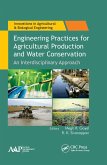The world population has increased dramatically in the past century, generating a concern for progressive and sustainable food production. It is expected to further increase by 1.3 billion in 2030 and by 2.5 billion in 2050, reaching 9.7 billion. To provide food security to this growing population, the world food production may need to increase by 60-110%. Biotic and abiotic stresses are major threat to plant growth and halt them from reaching their full genetic potential and ultimately limiting their productivity. High yield varieties are confronted by various stresses which lead to huge loss in production and productivity. Understanding the mechanisms involved in the response of plants to adverse environmental conditions is the first step in the generation of crops with higher tolerance to these stresses. This book provides a broad overview of biotic and abiotic stresses, their mechanisms and different strategies to improve stress tolerance in crop plants.
Hinweis: Dieser Artikel kann nur an eine deutsche Lieferadresse ausgeliefert werden.
Hinweis: Dieser Artikel kann nur an eine deutsche Lieferadresse ausgeliefert werden.








